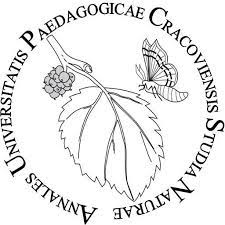Occurrence of Legionella spp. in water samples from selected basins in the Lesser Poland (Southern Poland) and identification of the main serogroups
DOI:
https://doi.org/10.24917/25438832.9.7Keywords:
gram-negative bacilli, pathogenicity, swimming pool water, serotypesAbstract
Legionella are small gram-negative rod-shaped bacteria. Some species occur in the environment and are not pathogenic while the species Legionella pneumophila cause the majority of human infections. Legionella are relatively resistant to standard water disinfection procedures, and, can occur in potable water. They can also survive within biofilms formed in aquatic systems. Sporadic and epidemic cases of legionellosis occur all over the world. Legionella are transmitted directly from the environment to humans. Infection results from exposure to contaminated aerosols, e.g. under showers, fountains, swimming pools, swimming pool basins, air humidifiers, and air conditioning, hot water installations in car washes. L. pneumophila is divided into 15 serogroups, among which serogroup 1 is the most prevalent disease-causing variant. The aim of this work was to present the frequency of Legionella occurrence in water samples collected in the period of October to December 2021 from selected swimming pools in Lesser Poland and to identify the main serogroups of Legionella spp., which may be dangerous due to their pathogenicity.
Downloads
Metrics
References
Annual Epidemiological Report for 2021; https://www.ecdc.europa.eu/sites/default/files/documents/legionnaires-disease-annual-epidemiological-report-2021.pdf
Borella, P., Bargellini, A., Marchegiano, P., Vecchi, E., Marchesi, I. (2016). Hospital-acquired Legionella infections: an update on the procedures for controlling environmental contamination. Ann Ig. Mar-Apr;28(2):98-108. doi: 10.7416/ai.2016.2088. PMID: 27071320.
Burnside, D.M., Wu, Y., Shafaie, S., Cianciotto, N.P. (2015). The Legionella pneumophila Siderophore Legiobactin Is a Polycarboxylate That Is Identical in Structure to Rhizoferrin. Infect Immun. Oct;83(10):3937-45. doi: 10.1128/IAI.00808-15.
Cianciotto, N. P. (2015). An update on Iron Acquisition by Legionella Pneumophila: new Pathways for Siderophore Uptake and Ferric Iron Reduction. Future Microbiology, 10(5), 841–851. https://doi.org/10.2217/fmb.15.21
Chauhan, D. & Shames, S.R. (2021). Pathogenicity and Virulence of Legionella: Intracellular replication and host response, Virulence, 12:1, 1122-1144; https://doi.org/10.1080/21505594.2021.1903199
Fields, B.S., Benson, R.F., Besser, R.E. (2002). Legionella and Legionnaires’ Disease: 25 Years of Investigation. Clinical Micobiology Reviews, 15(3):506-26.
Gług, M. (2024). Statystyki zakażeń bakterią Legionella, 11 Lipiec; https://legionella.pl/artykuly-pl/statystyki-zakazen-bakteria-legionella/
Iliadi, V., Staykova, J., Iliadis, S., Konstantinidou, I., Sivykh, P., Romanidou, G. Vardikov, D.F., Cassimos, D., Konstantinidis, T.G. (2022). Legionella pneumophila: The Journey from the Environment to the Blood. J. Clin. Med. 11, 6126. https://doi.org/10.3390/jcm11206126
Khan, M. T., Shah, I.A., Ihsanullah Ihsanullah, Naushad, M., Ali, S., Shah, S.H.A. Mohammad, A.W. (2021). Hospital wastewater as a source of environmental contamination: An overview of management practices, environmental risks, and treatment processes, Journal of Water Process Engineering, 41, 101990, https://doi.org/10.1016/j.jwpe.2021.101990.
Kim, B.R., Anderson, J.E., Mueller, S.A., Gaines, W.A., Kendall, A.M. (2002). Literature review-efficacy of various disinfectants against Legionella in water systems. Water Res. Nov;36(18):4433-44. doi: 10.1016/s0043-1354(02)00188-4. PMID: 12418646.
Krause. J.D. (2022). Legionella and the Role of Dissolved Oxygen in Its Growth and Inhibition: A Review. Water, 14(17), 2644; https://doi.org/10.3390/w14172644
Liles, M.R., Scheel, T.A., Cianciotto, N.P. (2000). Discovery of a Nonclassical Siderophore, Legiobactin, Produced by Strains of Legionella pneumophila. J Bacteriol 182:3. https://doi.org/10.1128/jb.182.3.749-757.2000
Maynard, E., Whapham, C. (2020). 3 - Quality and supply of water used in hospitals, Editor(s): Jimmy Walker, In Woodhead Publishing Series in Biomaterials, Decontamination in Hospitals and Healthcare (Second Edition), Woodhead Publishing, 45-69; https://doi.org/10.1016/B978-0-08-102565-9.00003-0.
Mondino, S., Schmidt, S., Rolando, M., Escoll, P., Gomez-Valero, L., Buchrieser, C. (2020). Legionnaires' Disease: State of the Art Knowledge of Pathogenesis Mechanisms of Legionella. Annu Rev Pathol. Jan 24;15:439-466. doi: 10.1146/annurev-pathmechdis-012419-032742.
Nisar, M.A., Ross, K.E., Brown, M.H., Bentham, R., Whiley, H. (2020). Legionella pneumophila and Protozoan Hosts: Implications for the Control of Hospital and Potable Water Systems. Pathogens 9(4), 286; https://doi.org/10.3390/pathogens9040286
Regulation of the Minister of Health of November 9, 2015 on the requirements to be met by water in swimming pools, OJ 2015 item 2016
Rello, J., Allam, C., Ruiz-Spinelli, A., Jarraud, S. (2024). Severe Legionnaires' disease. Ann Intensive Care. Apr 2;14(1):51. doi: 10.1186/s13613-024-01252-y. PMID: 38565811; PMCID: PMC10987467.
Steinert, M., Hentschel, U., Hacker, J. (2002). Legionella pneumophila: an aquatic microbe goes astray. FEMS Microbiology Reviews 26 (2002) 149-162
Xi, H., Ross, K.E., Hinds, J., Molino, P.J., Whiley, H. (2024). Efficacy of chlorine-based disinfectants to control Legionella within premise plumbing systems. Water Res. Aug 1;259:121794. doi: 10.1016/j.watres.2024.121794.
Yu, V.L., Plouffe, J.F., Pastoris, M.C., Stout, J.E., Schousboe, M., Widmer, A., Summersgill, J., File, T., Heath, C.M., Paterson, D.L., Chereshsky, A. (2002). Distribution of Legionella species and serogroups isolated by culture in patients with sporadic community-acquired legionellosis: An international collaborative survey. J. Infect. Dis. 186, 127–128. doi: 10.1086/341087.
Zwalczanie Legionelli - jak można pozbyć się grożnej bakterii (legionella.pl) [in Polish]

